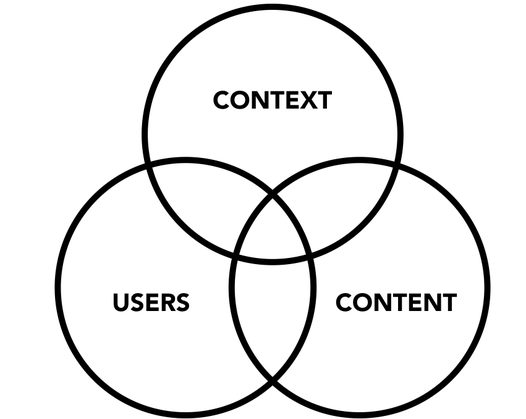Information Architecture Step by Step
|
Whether you are planning a new website with new content or reworking an existing website heavy with existing content, an Information Architecture project should be framed by business goals and user needs.
Information Architecture places priority on users, content, and context. Entire books have been written about understanding users, the content users engage with or create, and the context in which users consume information. Information Architecture for the Web and Beyond provides a thorough explanation of users, content, and context. Donna Spencer's book, A Practical Guide to Information Architecture, breaks the Information Architecture process into four main parts. Enhancing the list by adding business goals at the beginning results in a five step process.
Information Architecture Process Step-by-Step The five steps appear to be a linear process. Like most projects, Information Architecture projects are not always linear. Information Architects may not be responsible or have control over critical pieces of the project. An awareness of the five steps provides a ruler for measuring gaps in a project. 1. Understand the Business Context Meet with stakeholders to reveal business goals. Ask lots of questions, conduct individual and group interviews and ensure all stakeholders are heard.
If a team is working on an Information Architecture project, post stakeholder answers and comments in a public place for the team to reference. 2. Understand Users and their Context Observe users and conduct interviews to reveal user needs, goals, and behaviors.
Share results of user research with the team and with stakeholders. If the business does not yet have a primary persona, create one from user research. Communicating insights gained from user research and revealing user goals, needs, and behaviors may challenge the assumptions of the stakeholders and potentially shift the business goals of the project. Stay flexible and be ready to pivot on the project. 3. Understand the Content based on User Needs
Communicate content research activities to stakeholders and the team. Sometimes people have personal feelings attached to pieces of content. Lack of communication about reworking or removing content may cause hurt feelings and could lead to project impediments. 4. Design the IA and Test
Communicate designs, testing, and changes to stakeholders and the team. 5. Design the Navigation
Information Architecture is the big picture. Navigation helps users move through the Information Architecture to accomplish goals. For a successful Information Architecture, follow or adapt a process that includes regular tests with users and meaningful communication with stakeholders at every step in the process. |
